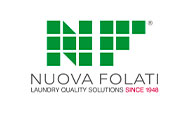
 Silk is a natural fiber of animal origin, produced by caterpillars commonly known as “silkworms”, which are actually larvae of the Bombyx Mori moth. The Bombyx caterpillar secretes a continuous double strand of sticky raw silk from its two large salivary glands and spins it in a figure eight pattern to form the cocoon where it will transform into a moth. The strands are mostly made of a protein called fibroin, and a gummy substance that encases the strands, named sericin.
Silk is a natural fiber of animal origin, produced by caterpillars commonly known as “silkworms”, which are actually larvae of the Bombyx Mori moth. The Bombyx caterpillar secretes a continuous double strand of sticky raw silk from its two large salivary glands and spins it in a figure eight pattern to form the cocoon where it will transform into a moth. The strands are mostly made of a protein called fibroin, and a gummy substance that encases the strands, named sericin.
 Raw Silk and Boiled Silk
Raw Silk and Boiled Silk
Upon being produced, silk is far from being soft and shiny; the presence of sericin makes it opaque, rough textured and stiff. Nonetheless, if raw silk (as it is known at this stage) is treated with a warm, soapy solution, the sericin dissolves, freeing the two strands of fibroin. The hence transformed fiber (“boiled” or “degummed” silk in technical terms), is commonly known as “silk”, and has a characteristic shine and softness which make it highly prized, comfortable and truly unique.
What are the characteristics of silk?
Readers may be surprised by a few properties of silk. For example, they may be stunned to learn that it is far from “delicate”. More specifically, silk is a very strong, tear-resistant fiber when dry, although its resistance decreases when wet. Another typical characteristic of silk is its insulating capacity. Although not to the same extent as wool, silk can nonetheless make the wearer feel warm in winter and cool in  summer. Once we add to this its hygroscopic capacity, by which it can absorb up to 30% of its weight in humidity, and its softness, it’s easy to understand why a garment or even underwear made of silk can truly make the wearer feel more comfortable.
summer. Once we add to this its hygroscopic capacity, by which it can absorb up to 30% of its weight in humidity, and its softness, it’s easy to understand why a garment or even underwear made of silk can truly make the wearer feel more comfortable.
But if on one hand silk has excellent intrinsic properties, on the other hand silk garments require paying attention to how they are used and cared for, in order to maintain their appearance, softness and shine over time.
Protecting silk garments during their use and maintenance
Because it’s made of a continuous thread, one of the issues that may arise is snagging, meaning that coming in contact with a sharp or pointed objects may result in the thread being caught and pulled out of place in certain areas of the fabric, creating hanging loops and pull-lines along the path of the thread within the fabric (as shown in the picture below).

It is very important to check the condition of all surfaces the garment may come in contact with (baskets, drums, etc.) to ensure they are free of any sharp edges, corners, or metal burrs that may pull threads out of the fabric.
Another important aspect to take into account for the use and maintenance of silk is that it is prone to superficial abrasion, particularly when humid or wet. Rubbing it may loosen the nap of outer fibers and form fuzz, with consequent loss of shine in the affected area. That same rubbing action occurs between garments in the dryer, and is the reason why wet cleaners are urged not to tumble-dry silk. In the picture below are close-ups of two different areas of the same silk garment. The first is unblemished, while the second shows the loss of shine and spots of a lighter color.
The same sensitivity to abrasion does not occur in a professional dry cleaning environment, as this process does not require wetting the silk with water.
 Lastly, we will briefly address a peculiar characteristic of certain silks: the tendency to accumulate static electricity. Some silk fabrics on today’s market are highly electrostatic due to the manufacturer’s production methods and excessive removal of moisture content from the fabric, especially when combined with synthetic materials such as polyester. Although there is no permanent solution, this problem may be significantly reduced by using a fabric softener.
Lastly, we will briefly address a peculiar characteristic of certain silks: the tendency to accumulate static electricity. Some silk fabrics on today’s market are highly electrostatic due to the manufacturer’s production methods and excessive removal of moisture content from the fabric, especially when combined with synthetic materials such as polyester. Although there is no permanent solution, this problem may be significantly reduced by using a fabric softener.
By ecochem s.r.l. and Ritex Ricerche e Prove Tessili (Ritex Textiles Research and Testing)
Detergo Magazine April 2015






























































